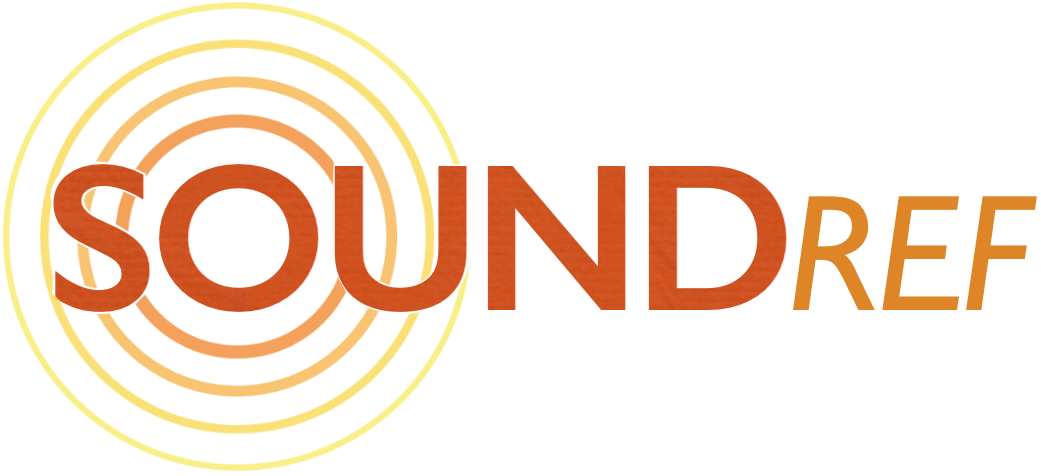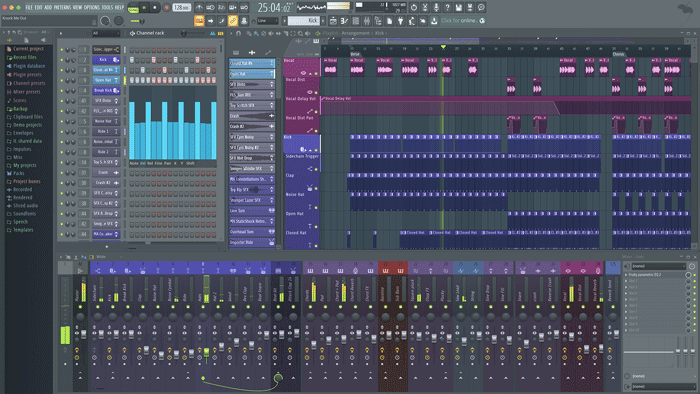How to choose the best DAW Software for your music
A round up of the 13 best DAW software
packages available today
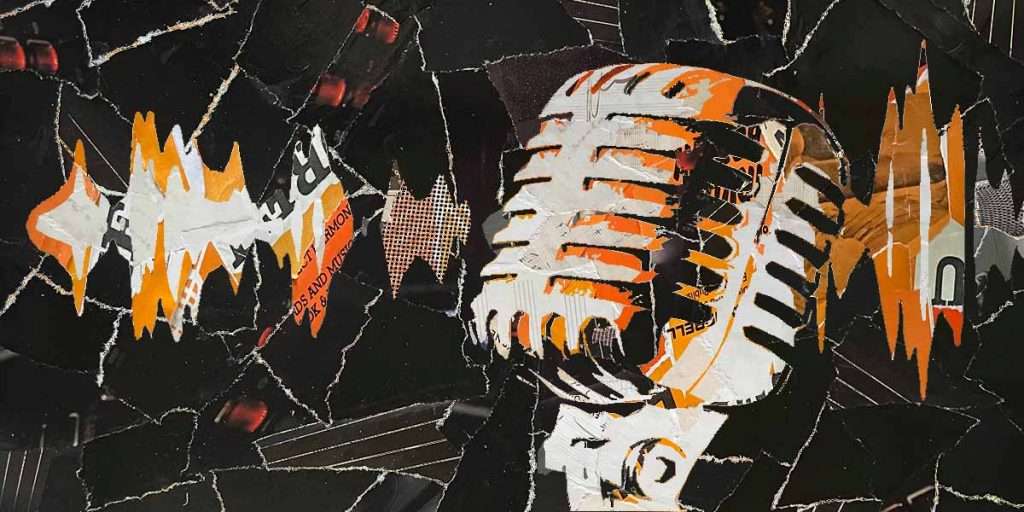
Choosing the DAW software is one of your most important decisions when setting up a home recording studio.
We live in exciting times. What once took a room full of equipment, can now be carried out on a tiny laptop.
This makes pro recording accessible to all. But just as there’s many types of studios, there’s many styles of music recording software. And it can be confusing when it comes to choosing the one for your own home recording studio.
Read on to learn how to chose the best DAW software for your studio…
What are DAWs?
Back in the 80s and 90s when DAWS first appeared, each had its own area of expertise. Cubase was a sequencer, Ableton Live was a DJ’s beat mixing tool, and Pro Tools provided a traditional recording environment.
And some DAWs catered for a particular genre of music.
Over the years, most DAWs have grown exponentially, each one covering just about everything – sequencing, audio recording, editing, mixing with effects, and mastering.
So in a way, it doesn’t matter which one you choose. They all do the same thing. But they do have different capabilities and work flows. And it’s up to you to find the best music production software for your creative needs.
Choosing the best DAW
Most DAWS are available in a limited form, so you can try them out. You’ll soon see if the interface is intuitive, and you like the workflow. It might be a free trial, or be limited by the number of tracks you can use.
Also ask yourself what genre of music will you be making. Some loop based DAWs, such as Ableton Live and FL Studio are popular with electronic music producers and beat makers.
Other DAWs, such as Logic Pro and Steinberg Cubase are powerful linear based all rounders for composing and recording.
Which computer?
Think about the computer you’ll be using to host the DAW software. Do you already have one?
If so, you’ll have to choose software which works within the specs. Cockos Reaper is a great choice for an old computer, because it has a small foot print, and it’s easy on the processor.
But if you’re getting a new computer for your DAW, you can get it spec’d out so it will run the software of your choice with no glitches.
Most DAWs are available on Mac and Windows, but there are exceptions. Most notably GarageBand and Logic Pro, which are Mac native.
Budget
Prices for DAWs range from completely free (BandLabs Cakewalk) to around $1,000 dollars a year (Pro Tools Flex).
But paying more doesn’t always mean you’re getting the most powerful software for your needs. The hugely powerful Logic Pro is only $200, just a fraction of the cost of comparable DAWs.
Let’s first look at everything DAWs are capable of to see which features you need.
The 5 amazing functions of a DAW
1. Record and edit audio
In combination with a sound card and microphone, you can use a DAW as a multi track digital recorder.
This means you can build up a song, one instrument at a time, until you have the full band appearing to play together.
2. Process audio
DAWs are extremely powerful.
On most DAWs, each track has access to a multitude of effects, such as compression, EQ and reverb. You can cut out sections you don’t like, and automatically correct the pitch and timing.
You can also use third party plugin effects, from big names in the industry. It’s like buying a rack mount effects unit in a traditional recording studio, but takes up no space.
Of course, the more effects you use, the more powerful a computer you’ll need.
3. MIDI sequencing
Some DAWs such as Steinberg Cubase, started out as computer based sequencers. This allows you to program, and play back, samplers and instruments via MIDI (musical interface digital interface).
DAWs bring both sequencing and audio recording together for the first time, creating a new creative recording experience.
4. Virtual instruments
There was a time when studio instruments were physical entities with keyboards.
But with DAWs, you can use ‘virtual’ software instruments. You play them with a midi controller keyboard, and use the sequencer to record.
The best DAW software packages come with a collection of their own samplers, synths and instruments, and there’s always the option to add 3rd party instruments too.
5. Mixing and mastering
Once you’ve filled your tracks with audio or MIDI data, and added effects, you can use your DAW to make an automated mix. Use the faders on a MIDI controller in real time, or simply draw the automation in on each track.
Use multi band compression, EQ and mastering effects to add the finishing touches to your track before sending it out to Spotify or to a film editor
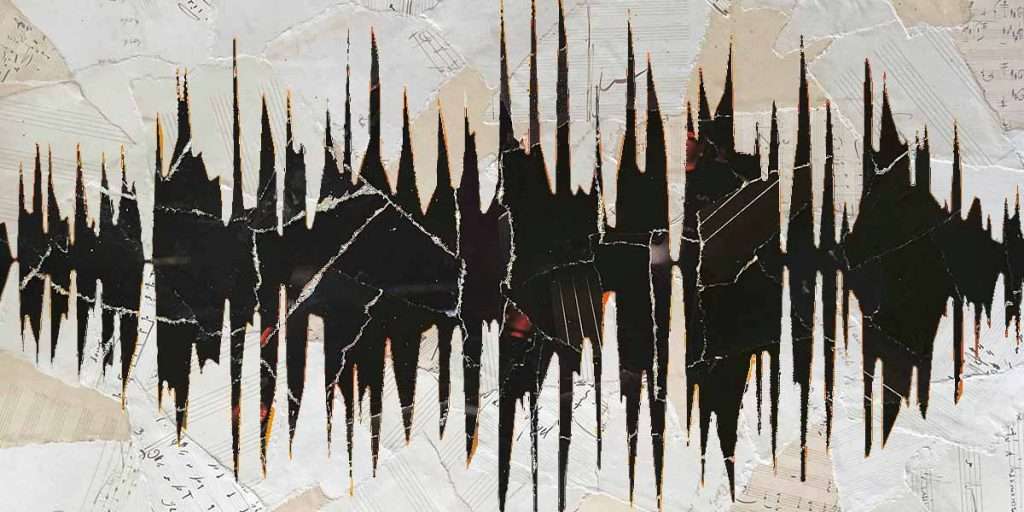
1. Ableton Live
For electronic, RnB, hip-hop and pop genres
Versions: Intro $99, Standard $449 and Suite $749
The Pros:
Highly intuitive
Easy to use
Quality instruments and effects
Great for live use
The cons:
Some effects introduce latency
Limited for detailed linear composing
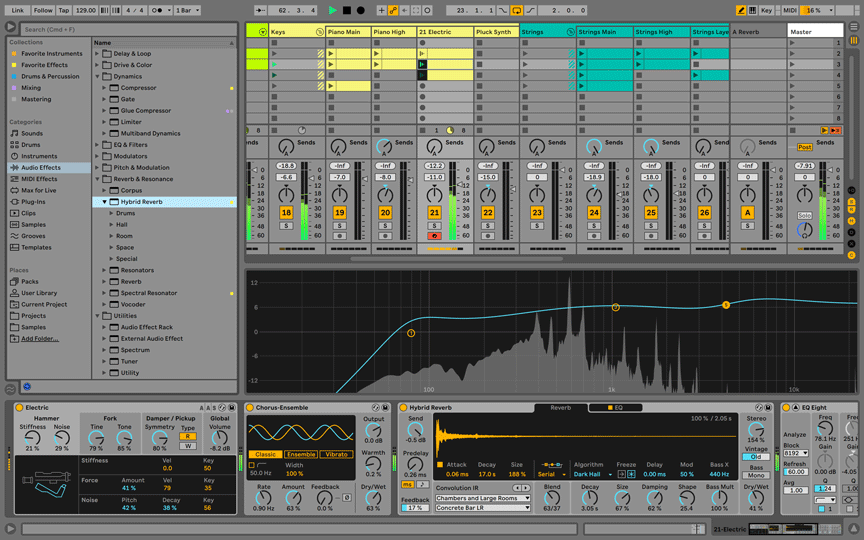
Ableton Live started out in 2001 as a live performance tool for DJs and beat makers. It was different in that it was loop based, working more like a drum machine than a tape recorder.
It became a huge hit for producers of electronic music, who like to take it on stage and create mixes on the fly.
Over the years, it’s evolved into a powerful all-round workhorse. There’s high quality effects plugins, samplers and synthesisers. One of the great features of Live is the latest comping feature, allowing intuitive loop based recording.
New in version 11 are 4 effects, including the Spectral Resonator and three top quality instruments created by Spitfire Audio (String Quartet, Upright Piano and Brass Quartet)
Try out the full featured Ableton 11 for free, for 90 days.
| Mac | PC | |
| OS | macOS 10.13 | Windows 10, Windows 11 |
| CPU | Intel Core i5 | Intel Core i5, AMD multi-core |
| RAM | 8 GB | 8 GB |
| Core install | 3 GB | 3 GB |
| Full install | 6 GB | 6 GB |
2. Apple Logic Pro
Film scores, electronic, hip hop, pop and other genres
Versions: one version $199.99
The pros:
Incredible value
Powerful and flexible software
Huge library of quality plugins and instruments
The cons:
Only available for Mac
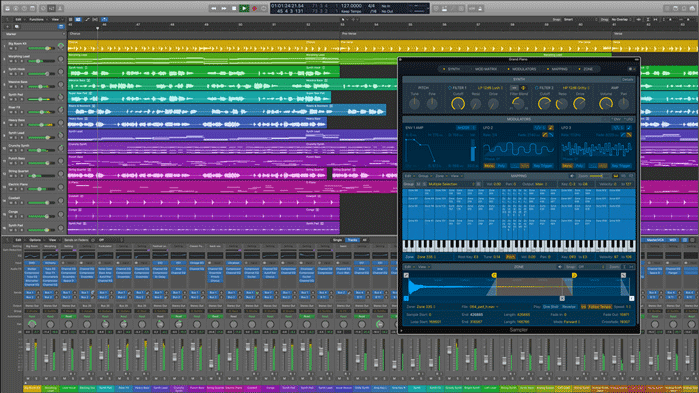
Logic was originally developed by Emagic in the 90s, and bought by Apple in 2002.
Since then, Apple have grown Logic Pro into one of the most powerful DAWs available. It comes with a vast collection of virtual instruments and high quality effects for use in music production and sound design.
Logic Pro was originally a linear based DAW, but recently added extensive live loop features. This was a huge improvement, and brought the creativity and beat making into line with Ableton Live.
Logic is known for its flex time and flex pitch features which allow easy pitch and time manipulation. But there’s a complete set of professional plugins meaning its possible to make top quality productions in-the-box.
At only $200, its an obvious contender if you plan on using use a mac. Especially considering that you can order it preinstalled and ready to go.
| OS | macOS 11.5 |
| CPU | 64-bit |
| Core install | 6 GB |
| Full install | 72 GB |
3. Steinberg Cubase
Pop, rock and classical genres
Versions: Elements $99.99, Artist $329.99, Pro $579.99
The pros:
Fully featured pro DAW
Innovative company
The cons:
It’s complex
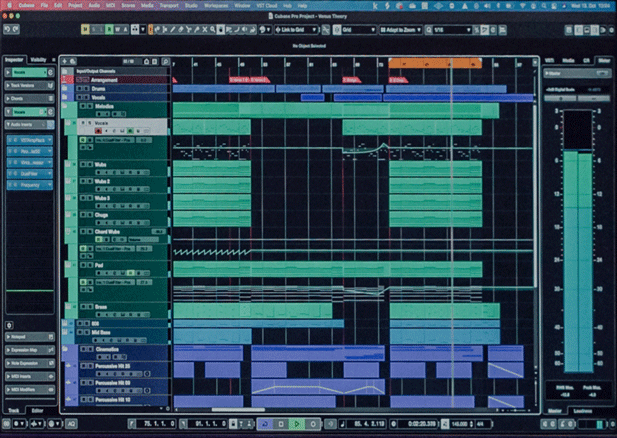
Cubase launched in 1999 as a Mac only sequencer. Within a few years, it had added audio recording, and compatibility with Windows.
Over the following decades, Steinberg have continued to lead innovation in DAW software. They developed ‘virtual synth technology’ allowing integration of 3rd party effects and instrument plugins. It became the industry standard.
Cubase is still one of the best music production software packages available, with a great selection of built in effects and instruments. It offers sequencing, recording, audio manipulation, and everything you need to mix and master a track to a professional standard.
The Elements edition is just $99.99, with the option of upgrading to the Artist or Pro versions as your needs change.
| Mac | PC | |
| OS | macOS Big Sur, macOS Monterey | 64-bit Windows 10, 64-bit Windows 11 |
| CPU | Intel Core i5 (mid 2013), Apple silicon | Intel Core i5 (4th gen), AMD Ryzen |
| RAM | 8 GB | 8 GB |
| Core install | 1 GB | 1 GB |
| Full install | 50 GB | 50 GB |
4. Image-Line FL Studio
All electronic genres
Versions: Fruity $99, Producer $199, Signature $299, All Plugins Bundle $899
The pros:
Free lifetime updates
Easy to use for beginner
Great for making beats
The cons:
Slightly outdated sounds
FL studio began life in 1998 as ‘Fruity Loops’, but Kellogg’s asked them to change the name. Feeling that shoppers were in danger of buying DAWs when looking for breakfast cereal.
FL Studio started out as an in-the-box solution for electronic music production. But it’s since come a long way, and has evolved into being able to handle any recording projects.
It’s still more orientated to those working with loops and beats, and has a low barrier to entry for those just getting started.
Image-line offer free upgrades for life on all FL Studio versions.
| Mac | PC | |
| OS | macOS 10.13.6 or later | Windows 8.1, 10.11 or later |
| CPU | Intel, Apple Silicon | Intel, AMD (not ARM) |
| RAM | 4 Gb | 4 Gb |
| Install | 4 Gb | 4 Gb |
5. PreSonus Studio One
The Songwriter’s DAW, multi genre
Versions: Prime (free), Artist $99, Professional $399
The pros:
Complete workstation
Good balance between creativity and function
Live performance features
Professional version integrates Melodyne
The cons:
User interface could be simpler
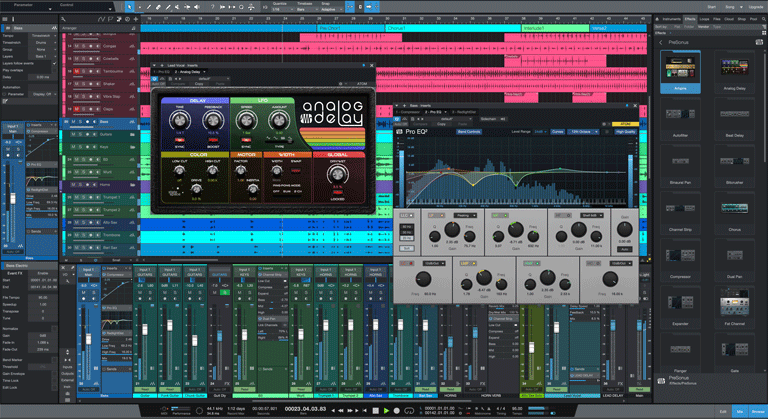
Studio One was developed by ex-employees of Steinberg. PreSonus were already known for making hardware audio interfaces and studio monitors. They now include either the Artist or Professional versions with each audio interface.
Studio One recently added advanced live features, including the ability to cue backing tracks, and change patches. This makes it a great choice to take on stage.
It includes a score editor based on the Notion software, but unfortunately you can’t print sheet music directly from it.
Studio One remains a serious competitor to the leading DAWs in this list.
| Mac | PC | |
| OS | macOS 10.13 or higher (64-bit) | Windows 10 (64-bit), Windows 11 (64 bit, v5.4+) |
| CPU | Intel Core i3 or better (Apple Silicon v5.4 +) | Intel Core i3/AMD A10 or better |
| RAM | 4 GB | 4 GB |
| Install | 10.5 GB | 10.4 GB |
6. Cockos Reaper
Rock, pop, electronic, classical and other genres
Versions: Personal $60, Commercial $225
The pros:
Incredible value for money
Highly customisable
Small footprint
Dedicated online community
The cons:
Uninspiring interface
No built in instruments
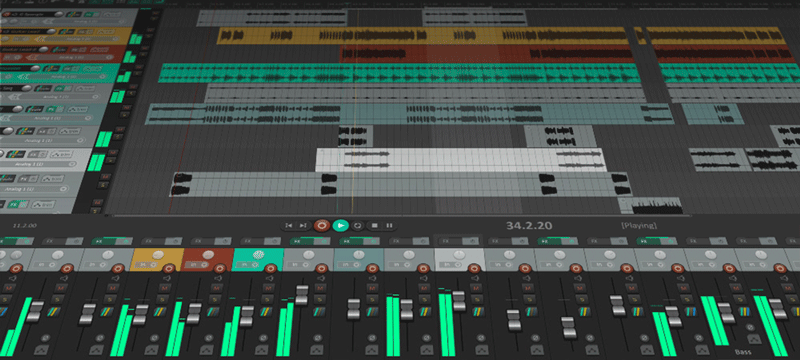
Reaper, by Cockos, is one of the great DAW success stories. It began as a boot strapped alternative to the major companies, and news spread rapidly by word of mouth.
It’s notably light on disk space and CPU power, so the perfect choice if you’re still using an old computer. It accepts all industry standard plugin formats, such as VST and AU.
It’s also incredible value when you consider how much it offers: advanced routing capabilities, customisation, open source code. This is as well as all the features you’d expect on a well rounded, pro level DAW.
Updates are frequent, and based on requests from users. There’s a 60 day trial, and if it works for you, you can pay the $60 for the complete package.
| Mac | PC | |
| OS | OS X 10.5-12x | 32-bit: Windows XP/Vista/7/8/10/11 |
| CPU | 64 bit | 32 or 64 bit, Intel only |
| RAM | 4 Gb | 4 Gb |
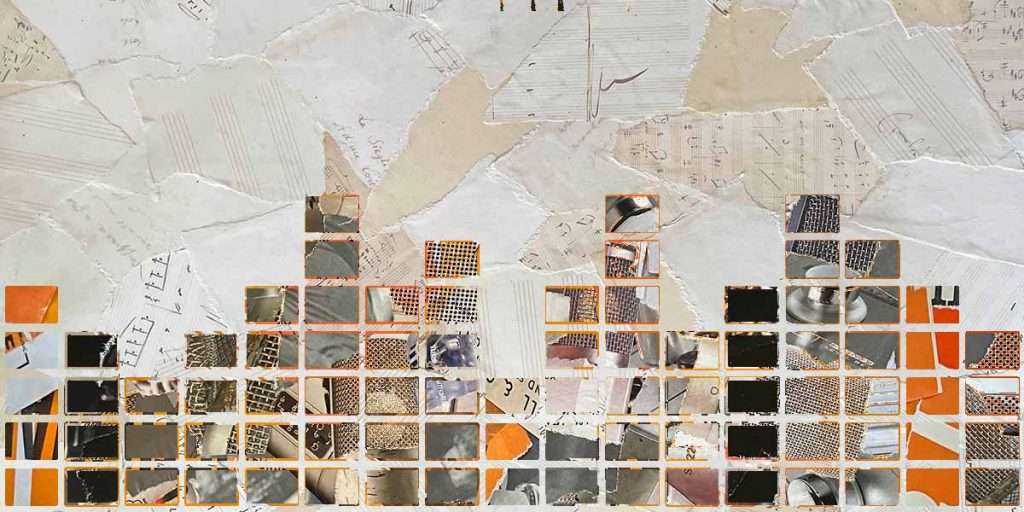
7. Reason Studios Reason
Sound design and electronic music
Version: Standard $289
The pros:
Fun, retro interface
Can be used as a plugin
The cons:
The outboard rack design may not work for you
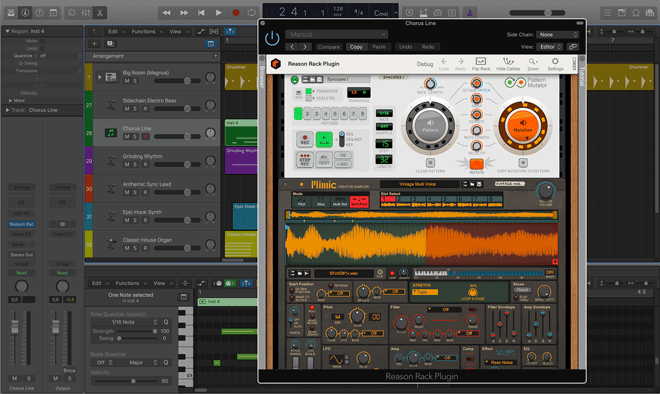
Reason had fallen behind its competitors until 2019, when a major update catapulted it into the limelight.
Its user interface mimics the rack mounted tools found in traditional recording studios. With access to virtual sockets, it’s a great opportunity to learn about patching and signal flow.
It has some classic old instruments, such as the Redrum and Kong. And with version 12 added the Mimic Creative Sampler, a fully featured sampler.
Although it’s a fully functioning DAW, it can be used as a plugin. This mean it’s collection of instruments and effects can be used with another DAW!
| Mac | PC | |
| OS | macOS 10.13 or later (64-bit) | Windows 10 or later (64-bit) |
| CPU | Intel or M1 with multi-core | Intel or AMD multi-core |
| RAM | 4 GB | 4 GB |
| Core install | 5.5 GB | 5.5 GB |
| Full install | 25.5 GB | 25.5 GB |
8. Bitwig Studio
For electronic genres
Versions: 16-track $99, Standard $399
The pros:
A very creative DAW
Intuitive workflow
The cons:
Less suited for linear recording and composing
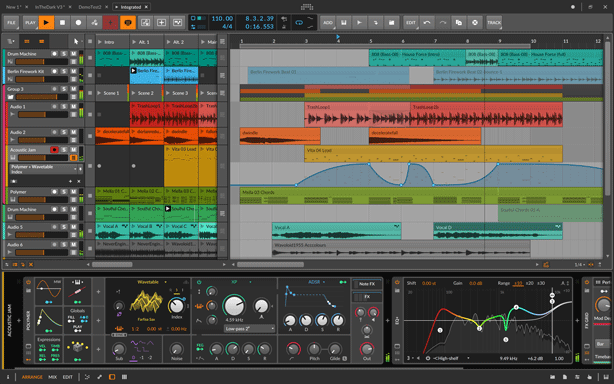
Bitwig Studio was developed with the help of former Ableton developers. Like Ableton, it has a loop based work flow, but within a modular design system.
It works with two key concepts – the ‘Launcher’ and the ‘Arrange timeline’, displayed side by side. Version four brings ‘Operators’, which allows a new creative triggering of midi event patterns.
Bitwig Studio is suited for both stage use, and composing, recording and mixing in the studio. Some of its creative features include beat-matching, and other turntable inspired effects.
| Mac | PC | |
| OS | macOS 10.14 or later | Windows 7 (64-bit), 8 (64-bit), 10 (64-bit), Windows 11 |
| CPU | 64-bit Intel or Apple Silicon | Dual-core AMD, Intel CPU or faster (with SSE4.1 support) |
| RAM | 4 GB | 4 GB |
| Full install | 12 GB | 12 GB |
9. Apple Garageband
Pop, hip hop, lo-fi and other genres
Version: free
The pros:
It’s free (for Mac users)
You can graduate onto Logic Pro
The cons:
No PC compatibility
It’s not a fully featured workstation
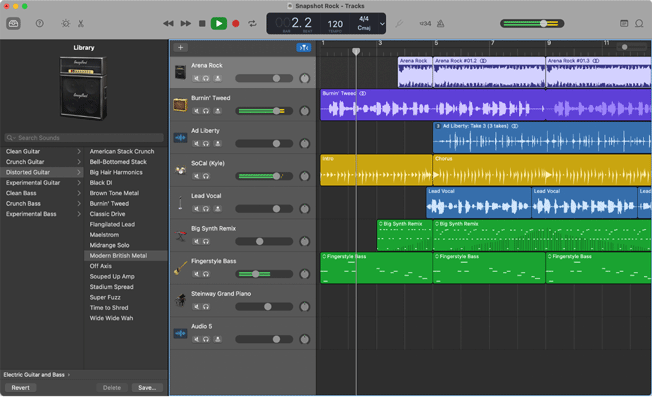
GarageBand comes as free software with all Macs. It’s like a stripped down version of the more powerful Logic Pro, and shares many features.
It comes with a substantial collection of pro quality instruments and effects, including grand piano and vintage guitar amps. And the Drummer feature creates automatic drum tracks.
Although limited in comparison with its big brother, with up to 255 audio tracks, it can still be used as a professional tool in the studio.
An added bonus is a collection of lessons for popular instruments such as the piano and guitar.
| Mac | |
| OS | macOS Big Sur or later |
10. Acoustica MixCraft
All music genres
Versions: Recording Studio $99, Pro Studio $199
The pros:
Fully featured powerful DAW
Melodyne integration
Great price
The cons:
Windows PC only
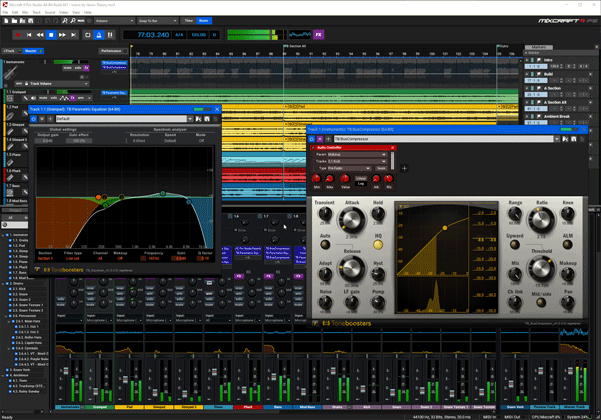
Acoustica MixCraft is a PC only DAW which isn’t as well known as some on this list. Despite the small price tag, it’s a powerful and capable DAW with an intuitive work flow.
It has a range of quality effects, a collection of instruments, and automation features which make this one of the best DAW software choices around.
| PC | |
| OS | Windows 7 SP1, 8, 10 or 11 (64 or 32-bit) |
| CPU | 1.8 GHz Dual Core CPU (Quad Core or higher) |
| RAM | 8 GB |
11. Avid ProTools
Classical, pop, and other genres
Versions: Artist $99 p/a, Studio $299 p/a, Flex $999 p/a (all per year)
The pros:
The industry standard
The cons:
Probably overkill for a home recording studio
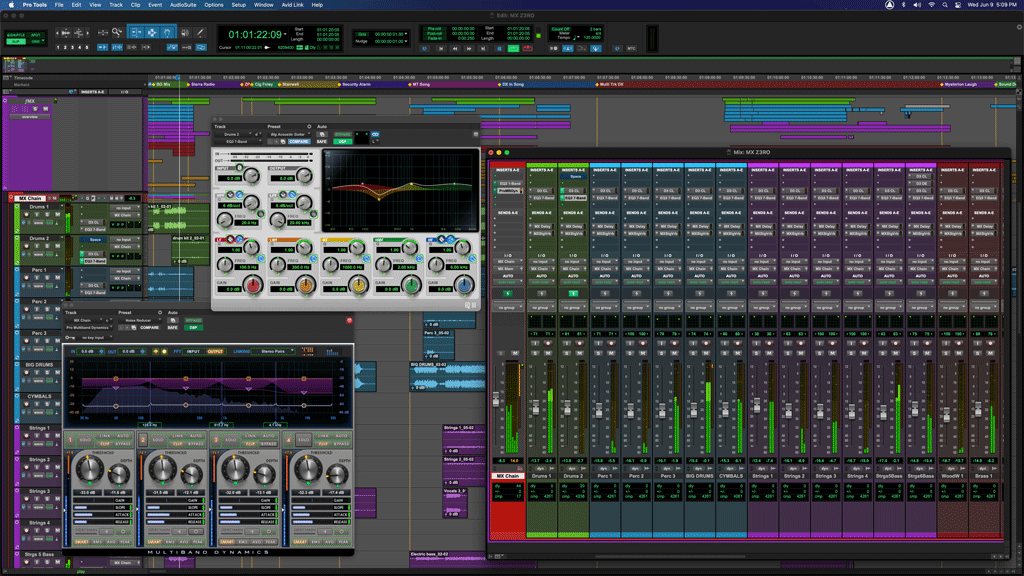
ProTools was designed for the traditional recording studio in the 1990s, and has since established itself as the industry standard.
You’ll find a copy of ProTools in every high end recording studio in the world. It’s a solid DAW, and worth learning if you intend to get a job in a professional recording studio.
Although it now has extensive midi sequencing capabilities, its primarily used for linear recording, taking the place of the traditional multitrack tape recorder.
Everything about ProTools is high quality, including the work flow and effects. The latest version has two excellent new virtual instruments: GrooveCell, an intuitive drum machine and SynthCell, and analogue style synthesiser.
| Mac | PC | |
| OS | macOS 10.14.6, 10.15.7, 11.6, 12.3 | Windows 10 & 11 (64-bit) |
| CPU | Intel Core i5 | Intel Core i5 |
| RAM | 16 GB | 16 GB |
| Install | 15 GB | 15 GB |
12. Cakewalk by Bandlab
Pop, rock and other genres
Version: Standard (free)
The pros:
Customisable workspace
Fully featured
The cons:
There’s no Mac compatibility
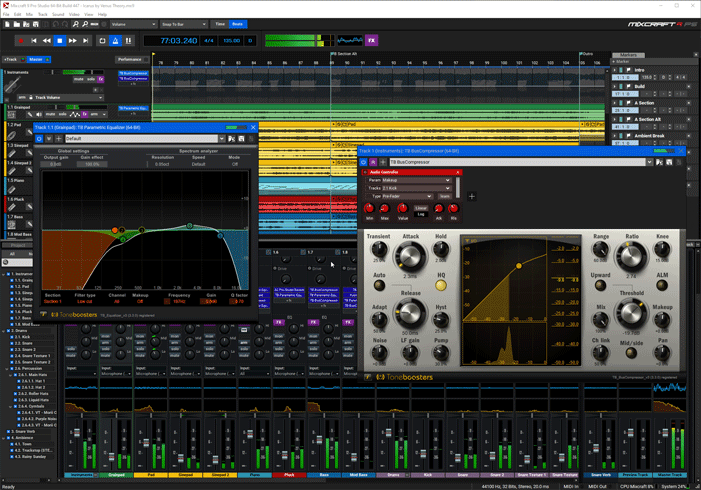
Cakewalk is a free PC only DAW, which was acquired from Gibson in 2018. It’s a fully featured DAW, capable of audio recording, editing, sequencing, arranging and mixing.
With a collection of instruments, and studio quality effects, it makes good sense to try this DAW out first if you’re using a PC.
| PC | |
| OS | Windows 8.1 or higher (64-bit only) |
| CPU | Multi-core Intel or AMD CPU |
| RAM | 8 GB |
| Install | 3 GB |
13. MOTU Digital Performer
TV scoring and most genres
Version: Standard $499
The pros:
Very powerful DAW
Constantly improving
The cons:
Steep learning curve
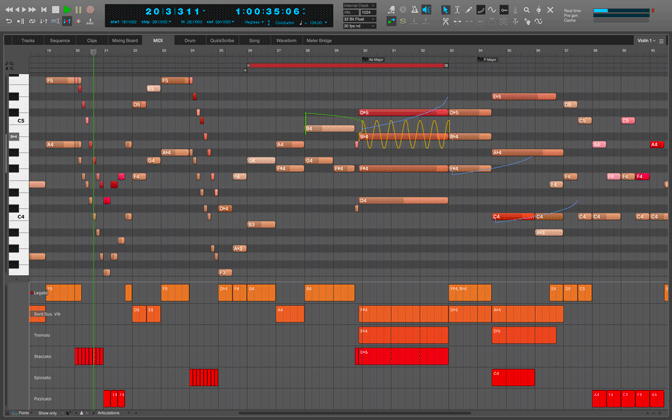
Digital Performer is one of the original DAWs, originally favoured by composers because it was easy to record music for picture.
It’s grown over the years into a powerful DAW, capable of producing just about any music genre. And it recently added the Clips Window, making it more attractive for live performance.
The latest version saw an overhaul of the environment and a powerful upgrade to the Nanosampler.
A copy of ‘Performer Lite’ is included when you buy a MOTU audio interface, such as the M2 or Ultralite Mk5. It has enough features to get you started and to see if it’s a good fit for you.
| Mac | PC | |
| OS | macOS 10.13 – 10.15 and 11.2+ | Windows 10 (64-bit only) |
| CPU | Intel Core i3 or faster (inc AMD or Apple Silicon) | Intel Core i3 or faster |
| RAM | 4 GB | 4 GB |
Conclusion
The days of one DAW ‘sounding better’ than another are long one. It’s more about finding the music production software you can work with easily. You need software that supports the creative process, and inspires you to make great music.
Try out a couple of demos and see what you think. If you’re just starting out, consider a Lite version of a powerful DAW, and upgrade to something more powerful as your experience grows.
Whatever you choose, you’ll get used to it over time. Just make sure it’s compatible with your computer
Education is the key to getting a pro sound. I’ve made a guide to help you choose the Best Online Music Production Courses available right now
Author: Daren B

Daren studied classical piano and composition at Trinity College of Music, at undergraduate and postgraduate level.
His music has been performed at the Southbank Centre, Tate Modern, and the Courtauld Institute, and broadcast on BBC Radio 3, Radio 4 and countless TV shows, including The Apprentice, Top Gear and Horizon.
Daren is a former lecturer on the BA Music Course at Goldsmiths College, University of London. He currently works in London as a composer and psychotherapist.
